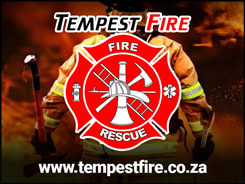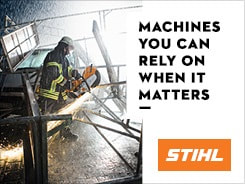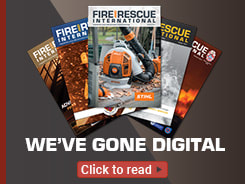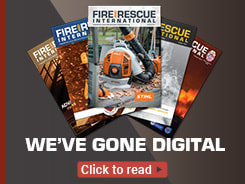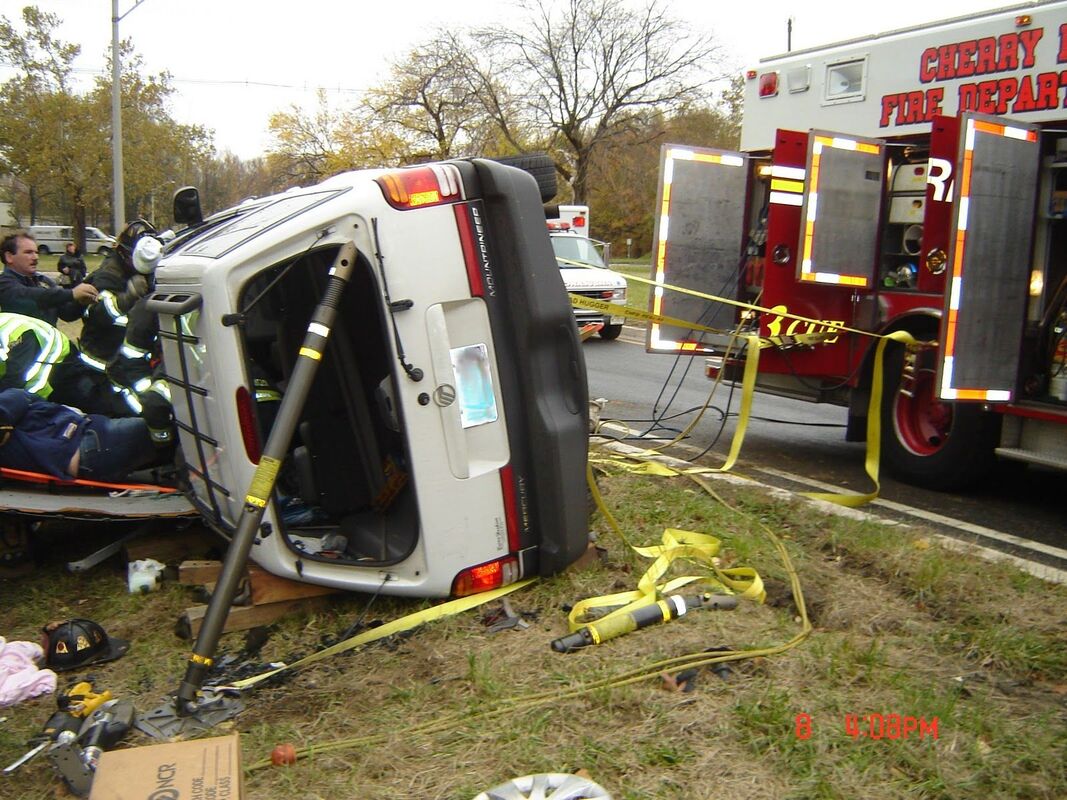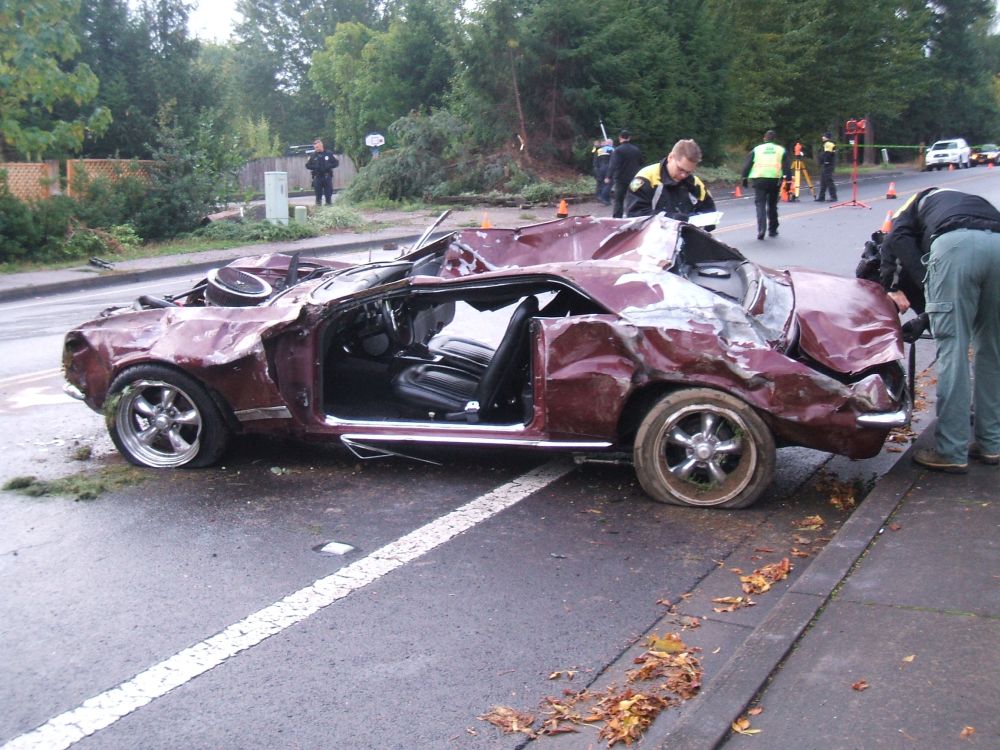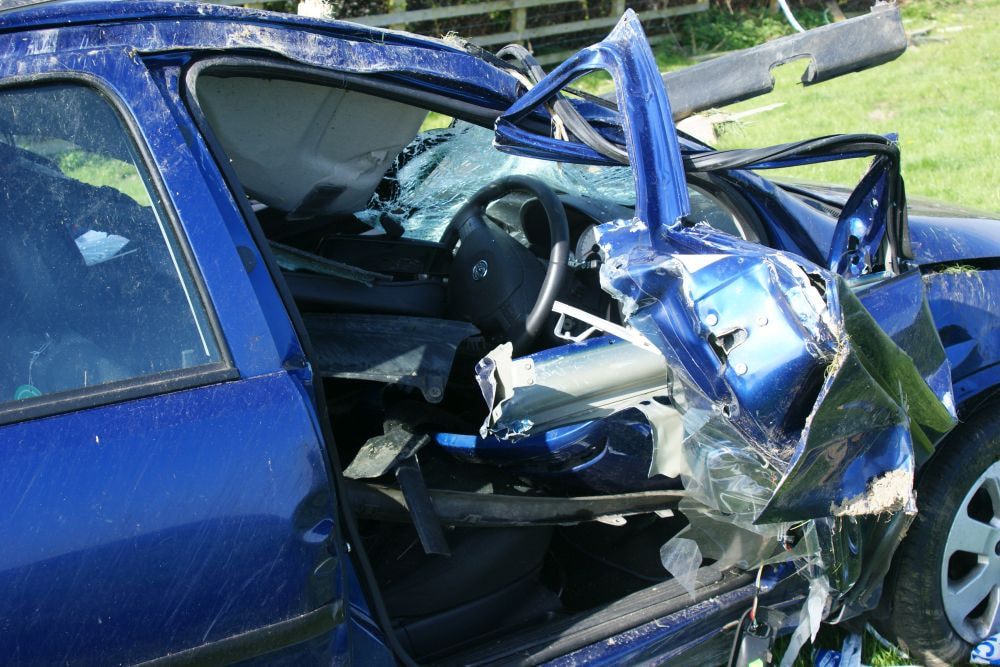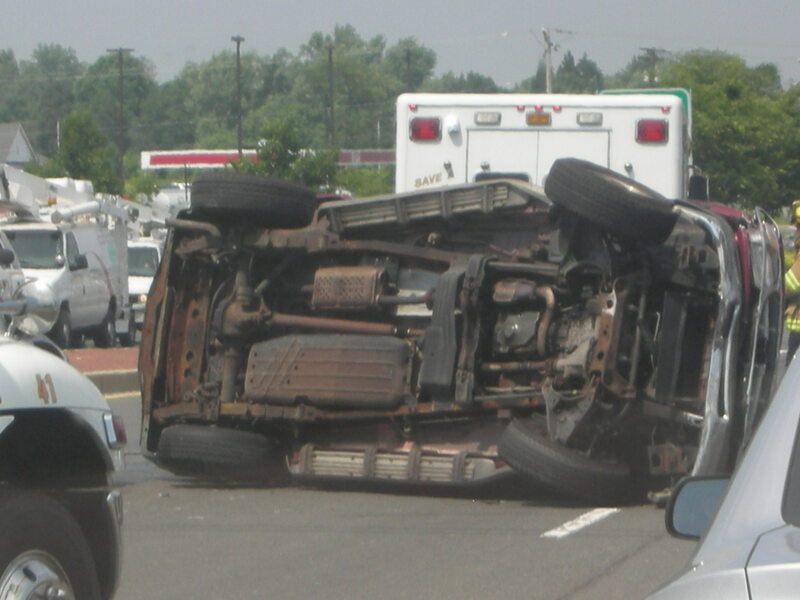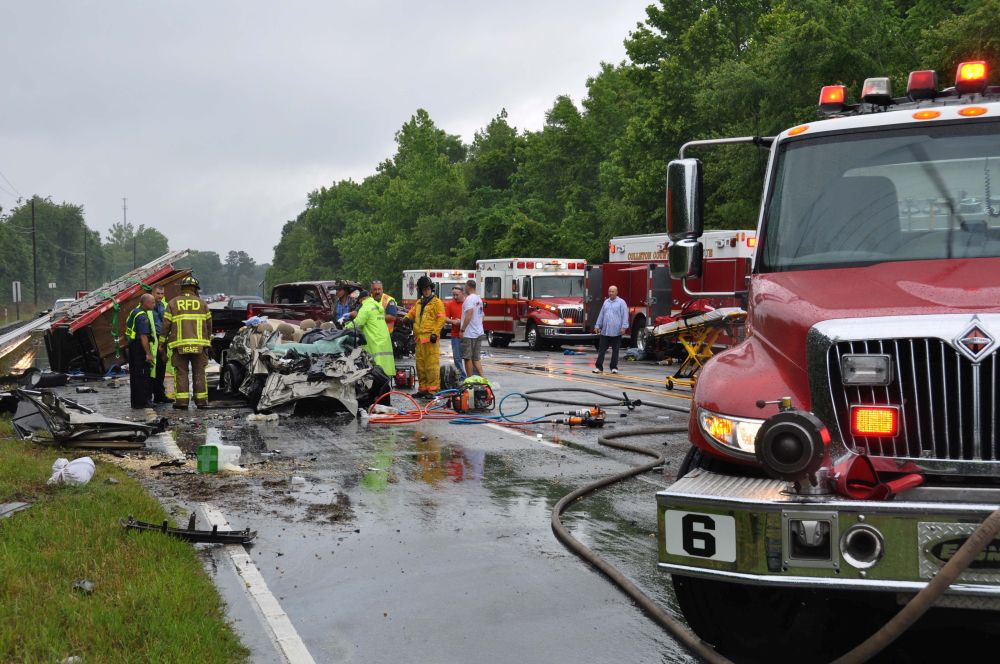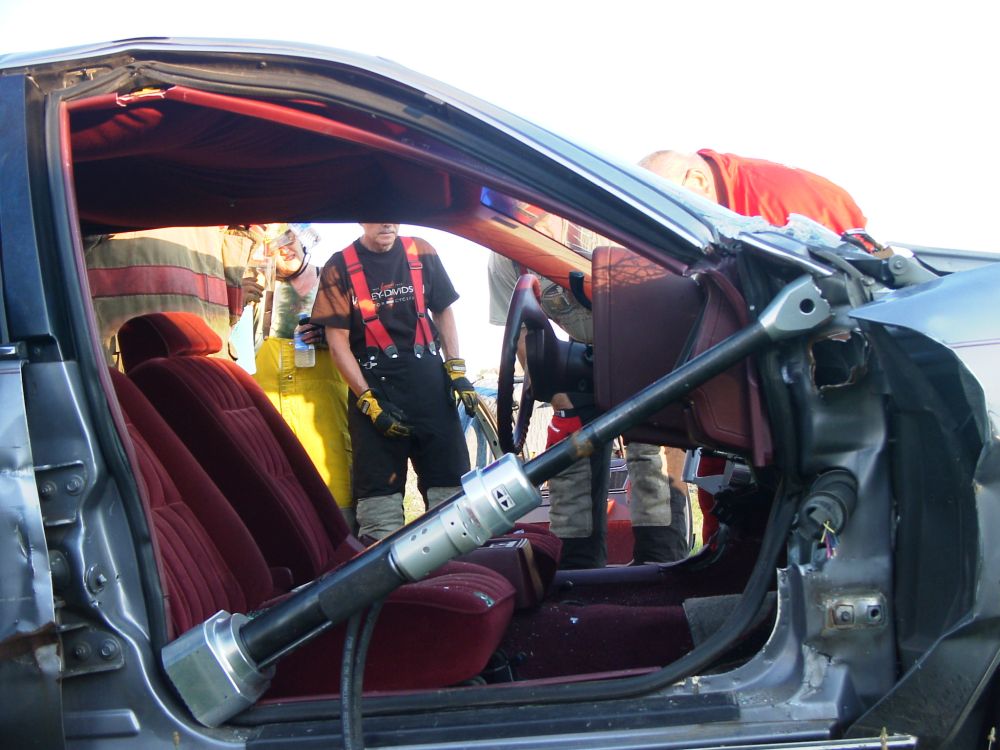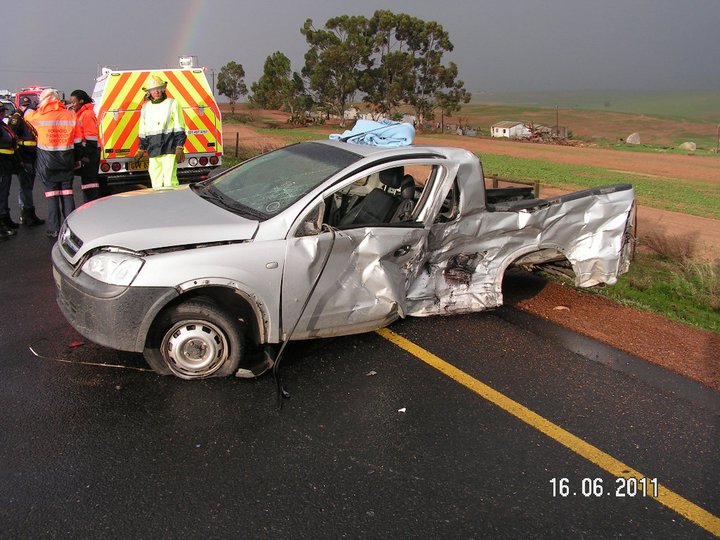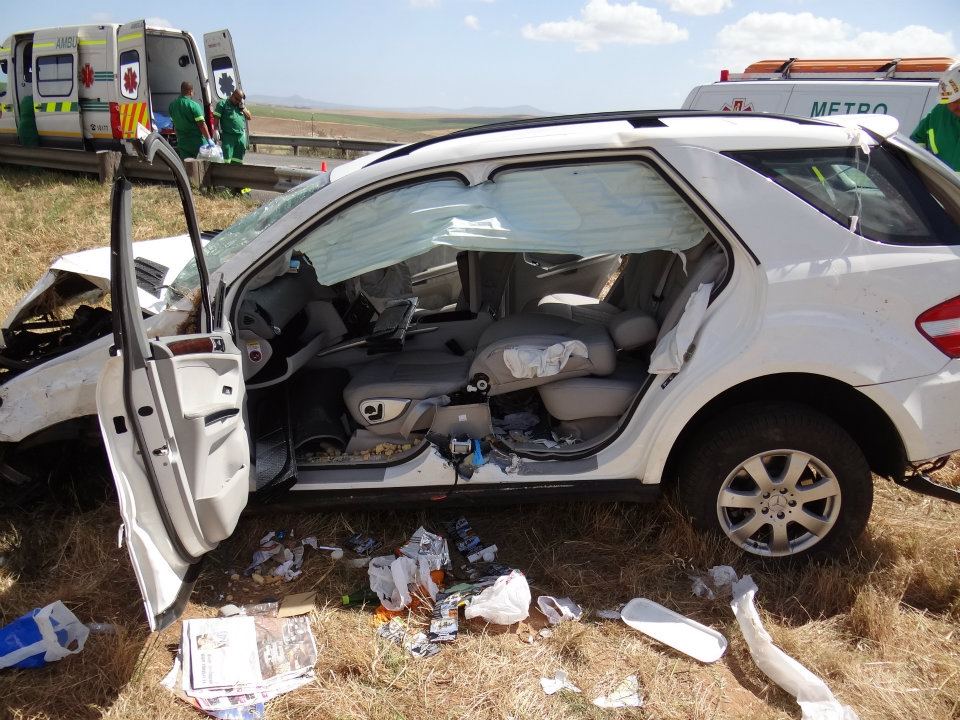- Home
- Magazines
-
Newsletters
- 19 July 2024
- 12 July 2024
- 5 July 2024
- 28 June 2024
- 14 June 2024
- 7 June 2024
- 31 May 2024
- 24 May 2024
- 17 May 2024
- 10 May 2024
- 3 May 2024
- 26 April 2024
- 19 April 2024
- 12 April 2024
- 22 March 2024
- 15 March 2024
- 8 March 2024
- 1 March 2024
- 23 February 2024
- 16 February 2024
- 9 February 2024
- 26 January 2024
- 19 January 2024
- 12 January 2024
- 22 December 2023
- 1 December 2023
- 24 November 2023
- 10 November 2023
- 3 November 2023
- 27 October 2023
- 20 October 2023
- 13 October 2023
- 6 October 2023
- 29 September 2023
- 22 September 2023
- 15 September 2023
- 8 September 2023
- 25 August 2023
- 18 August 2023
- 11 August 2023
- 4 August 2023
- 28 July 2023
- 21 July 2023
- 14 July 2023
- 7 July 2023
- 30 June 2023
- 23 June 2023
- 15 June 2023
- 2 June 2023
- 26 May 2023
- 19 May 2023
- 12 May 2023
- 5 May 2023
- 28 April 2023
- 21 April 2023
- 14 April 2023
- 6 April 2023
- 31 March 2023
- 24 March 2023
- 17 March 2023
- 10 March 2023
- 3 March 2023
- 24 February 2023
- 17 February 2023
- 10 February 2023
- 3 February 2023
- 27 January 2023
- 13 January 2023
- 22 December 2022
- 15 December 2022
- 9 December 2022
- 2 December 2022
- 25 November 2022
- 18 November 2022
- 11 November 2022
- 4 November 2022
- Advertising
- Subscribe
- Articles
-
Galleries
- AOSH Firexpo 2024
- Midvaal Fit to Fight Fire 2024
- WoF KNP 2023 Gallery
- TFA 2023 Gallery
- DMISA Conference 2023
- ETS 2023 Gallery
- Drager Fire Combat and Rescue Challenge 2023
- AOSH Firexpo 2023
- Midvaal Fit to Fight Fire
- WC IFFD 2023
- NMU 13th Fire Management Symposium 2022
- JOIFF Africa Conference 2022
- ETS 2022 Gallery
- TFA 2022 Gallery
- IFFD 2018
- SAESI
- TFA
- WRC 2018
- WRC 2019
- A-OSH/Securex
- IFE AGM 2019
- ETS Ind Fire Comp Nov 2019
- ETS Challenge 2021
- Drager launch
- Drager Fire Combat and Rescue Challenge 2022
- TFA
- Contact
- Home
- Magazines
-
Newsletters
- 19 July 2024
- 12 July 2024
- 5 July 2024
- 28 June 2024
- 14 June 2024
- 7 June 2024
- 31 May 2024
- 24 May 2024
- 17 May 2024
- 10 May 2024
- 3 May 2024
- 26 April 2024
- 19 April 2024
- 12 April 2024
- 22 March 2024
- 15 March 2024
- 8 March 2024
- 1 March 2024
- 23 February 2024
- 16 February 2024
- 9 February 2024
- 26 January 2024
- 19 January 2024
- 12 January 2024
- 22 December 2023
- 1 December 2023
- 24 November 2023
- 10 November 2023
- 3 November 2023
- 27 October 2023
- 20 October 2023
- 13 October 2023
- 6 October 2023
- 29 September 2023
- 22 September 2023
- 15 September 2023
- 8 September 2023
- 25 August 2023
- 18 August 2023
- 11 August 2023
- 4 August 2023
- 28 July 2023
- 21 July 2023
- 14 July 2023
- 7 July 2023
- 30 June 2023
- 23 June 2023
- 15 June 2023
- 2 June 2023
- 26 May 2023
- 19 May 2023
- 12 May 2023
- 5 May 2023
- 28 April 2023
- 21 April 2023
- 14 April 2023
- 6 April 2023
- 31 March 2023
- 24 March 2023
- 17 March 2023
- 10 March 2023
- 3 March 2023
- 24 February 2023
- 17 February 2023
- 10 February 2023
- 3 February 2023
- 27 January 2023
- 13 January 2023
- 22 December 2022
- 15 December 2022
- 9 December 2022
- 2 December 2022
- 25 November 2022
- 18 November 2022
- 11 November 2022
- 4 November 2022
- Advertising
- Subscribe
- Articles
-
Galleries
- AOSH Firexpo 2024
- Midvaal Fit to Fight Fire 2024
- WoF KNP 2023 Gallery
- TFA 2023 Gallery
- DMISA Conference 2023
- ETS 2023 Gallery
- Drager Fire Combat and Rescue Challenge 2023
- AOSH Firexpo 2023
- Midvaal Fit to Fight Fire
- WC IFFD 2023
- NMU 13th Fire Management Symposium 2022
- JOIFF Africa Conference 2022
- ETS 2022 Gallery
- TFA 2022 Gallery
- IFFD 2018
- SAESI
- TFA
- WRC 2018
- WRC 2019
- A-OSH/Securex
- IFE AGM 2019
- ETS Ind Fire Comp Nov 2019
- ETS Challenge 2021
- Drager launch
- Drager Fire Combat and Rescue Challenge 2022
- TFA
- Contact
|
6 October 2023
|
Featured FRI Magazine article: Motor vehicle rescue: the right training, the right equipment, the right system, the right impact by Colin Deiner (FRI Vol 1 no 6)
This week’s featured Fire and Rescue International magazine article is: Motor vehicle rescue: the right training, the right equipment, the right system, the right impact written by Colin Deiner, chief director, Disaster management and Fire Brigade Services, Western Cape Provincial Government (FRI Vol 1 no 6). We will be sharing more technical/research/tactical articles from Fire and Rescue International magazine on a weekly basis with our readers to assist in technology transfer. This will hopefully create an increased awareness, providing you with hands-on advice and guidance. All our magazines are available free of charge in PDF format on our website and online at ISSUU. We also provide all technical articles as a free download in our article archive on our website.
Motor vehicle rescue: the right training, the right equipment, the right system, the right impact
By Colin Deiner, Chief Director, Disaster management and Fire Brigade Services, Western Cape Provincial Government
An average of 1 200 people are killed on South Africa’s roads every month. Billions are spent annually on road safety awareness programmes. Everywhere we are looking for ways to bring down the death toll. We have pedestrian campaigns; drink driving crackdowns, roadworthy campaigns, children’s awareness programmes.
We often neglect the one area where we can save many lives if we do it right. We forget about the ‘golden hour’ and the part that we, as emergency service managers and vehicle rescue technicians, can play.
The ‘golden hour’
It is generally accepted that the concept of the golden hour was first promoted by a military surgeon, Dr R Adams Cowley, who later became the head of the University of Maryland Shock Trauma Centre, whose website quotes Dr Adams Cowley as saying "there is a golden hour between life and death. If you are critically injured you have less than 60 minutes to survive. You might not die right then; it may be three days or two weeks later - but something has happened in your body that is irreparable.”
A more refined version would indicate that the victim's chances of survival are greatest if they receive care within the first hour after suffering severe trauma.
The ‘golden hour’ concept enjoyed a huge amount of attention in the USA and United Kingdom in the late seventies and early eighties and even spawned a television series of the same name. With the establishment of paramedic response systems in South Africa in the eighties by some visionary medical specialists in Johannesburg and Cape Town, the concept took hold here and with it developed some of the top trauma response systems in the world.
The optimisation of the ‘golden hour’ meant that a high level of advanced life support was now being taken to the patient still trapped in his/her vehicle instead of the trauma team having to wait for the patient to arrive at the hospital. The concept is obviously reliant on certain critical factors which relate to the severity of the injuries sustained and the subsequent rate of deterioration of the patient, the distance to the incident and subsequent travel time from the incident to the hospital, and the time taken for the rescue team to respond to the incident scene, extricate the patient and present the patient to the medical team for transportation. It is this third factor which we will concentrate on in this article.
The ‘platinum twenty minutes’
If we were to start dissecting the ‘golden hour’, we will find that an awful lot of things have to happen in those first sixty minutes following an accident for role-players to achieve their collective goal: a live patient with a good prognosis. Someone has to detect the accident and report it - this has become quicker and easier nowadays due to the proliferation of cell phones and emergency call taking centres, emergency services need to respond to the scene, secure the scene, access the patient and commence advanced life support. While this is happening the rescue crews have to stabilise the scene by removing and/or securing all prevailing hazards, create an entry path for the paramedic to the victim, stabilise the vehicle and extricate the victim before assisting the medical crew in packaging and removing the released patient and preparing him/her for transportation.
All of the above actions take time and it is only through a well-developed and practiced system in which each role player works hard at optimising their specific area of operations, that the objective can be achieved.
The ‘platinum twenty minutes’ starts with the arrival of the key players in the rescue team and governs those actions that will guide their activities and specifically the decisions made by the incident commander at this time. These twenty minutes covers the time allocated within the ‘golden hour’ to the rescue crew for stabilising, accessing and removing the victim from a car wreck and preparing that victim for transport to definitive medical care.
We need to do what we have to do in twenty minutes or less. I’m hoping to share some ideas here on how to achieve that.
The first decision
The first and most critical decision the incident commander will have to make upon arrival will be guided by the condition of the patient and the degree of entrapment and it is vital that the senior medical team member on scene communicates this information clearly and states his/her intentions as to the required actions.
The severity of the accident damage will provide good information on the possible course of action. This will contain valuable clues as to the mechanism of injury which should be assessed together with the obvious injuries in formulating the decision. It is, of course, true that although these signs are helpful, they will not always provide the full picture. It is therefore vital that at least two team members be tasked to carry out a 360 degree inner and outer survey of the accident scene.
The rescuer doing the inner survey walks around the scene and focus his/her attention on the wreck itself checking for prevailing hazards, vehicle stability, number of patients, degree of entrapment and makes a mental note of the possible course of action that could be taken related to stabilisation of the wreck, glass removal and metal relocation
The person conducting the outer survey takes a wider route around the wreck and looks for external hazards such as fire risks, hazardous material spillages and tell-tale signs that people might have been ejected from the vehicles involved in the accident or pedestrians that may have been involved.
While this is happening the medical responder should try to make contact with the patient safely and attempt to establish the level of consciousness, degree of injuries and level of entrapment. Modern safety systems and particularly a deployed airbag, could hide certain obvious signs related to a victims injuries and must be considered in all such cases.
The incident commander (IC) should at this time take up a position which provides the maximum advantage in terms of safety, situational awareness and control (I have found that finding a spot near the front of the vehicle is most advantages for this purpose).
This rapid assessment should last no longer than 90 seconds and should culminate in all team members meeting the incident commander and providing feedback on their observations. It is now when the vital first decision is made and there are four possibilities:
One other consideration will be in-vehicle resuscitation. This will happen in situations where the victim needs to be resuscitated while still trapped and where the time taken to extricate him/her could lead to death. The most important task for the rescue team in this case would be to support the paramedics in their efforts by on-going stabilisation of the vehicle and removal of glass and metal that could compromise the safety of the medical crew or the resuscitation efforts
Teamwork
Although the majority of responses to motor vehicle accidents in South Africa are multi-agency responses, where you can find upwards of two different agencies working on the same scene, it is crucial that an interactive approach be followed whereby the medical responders must know what to expect from the rescue team and the rescue team must have a realistic knowledge of the capacity and needs of the medical team.
I have often heard the complaint from emergency responders: “we don’t work for the same service and this causes confusion at rescue scenes” and it is normally followed by “and we don’t have a solution”.
Well, here’s the solution: next time you have a quiet evening on shift, load your crew into your rescue truck, drive down to the ambulance station (maybe pick up some doughnuts on the way) and do a training exercise with the medical guys. While you are at it, why not invite the local private medical service as well (they might pay for the doughnuts!).
The important point is: vehicle extrication is the one primary function, which you will be doing often and where you will save the most lives. Everybody involved must get it right. The bleeding, screaming, bloodied victims couldn’t care about your “turf”.
As in any emergency response, there are an optimal number of people required to conduct a safe and effective rescue. Ever since the start of the ‘team approach’ to vehicle rescue, which was pioneered by two Florida fire fighters, Steve Kidd and John Cjazkowski, through their ‘car busters’ series in the early eighties, it has been generally accepted that the optimum rescue team should consist of five members made up of the following positions:
The job of the incident commander is to size up the scene, listen to his/her team members, decide on an action plan and then ensure the perfect harmony for the team to achieve their objectives in relation to his/her plan. As incident commander, you should ensure that no team member is left in any doubt at any time as to what the plan is and what is expected of them. You should be easily accessible, listen to your team and make clear, strong decisions.
The rescue crew is responsible for getting to the victim and getting the patient out of the wreck. This includes a number of tasks of which the following are most important:
The medical team is responsible for accessing the victim and managing him/her for the duration of the rescue operation, transportation to hospital and delivery to the surgical team. Their main activities should be:
All of these activities need to exist side-by-side in perfect harmony. No one task is more important that the other and it is crucial that each team member understands the role his/her fellow team member is playing in ensuring a successful outcome.
Stabilisation: Not just for competitions
It has many times been a concern of mine to observe rescue teams competing in extrication challenges, carry out highly elaborate vehicle stabilisation tasks, only to toss all this kit into the store back at the station and then start looking for it again in a year or two when they start their preparation for the next challenge. Vehicle stabilisation should be the second major activity, after scene safety and should always form part of the incident commanders plans during the initial size up.
The rule is simple. A vehicle is designed to be stable when it is standing on all four its wheels with no major damage. The moment it is no longer on all four its wheels and has suffered structural damage it is unstable.
Working in an unstable vehicle wreck has severe safety implications for the rescuers, medics and, most critically, the patient. I do not intend to go into a lesson on vehicle stabilisation here, save to reiterate the importance thereof. Let’s forget about vehicles having lockers full of shoring looking “untidy”. Sure, the two-hundred-rand-piece of cribbing might not be a sexy as the half-a-million-rand hydraulic rescue plant but they both have their place alongside each other and should be checked and maintained with the same mind-set.
A final word on stabilisation, remember: stabilisation is an on-going process and doesn’t end after the set of vehicle chocks have been placed under the car. The initial stabilisation is intended to provide a safe base for rescuers to work on, climb into, break and cut. Once a major activity has taken place (such a dash relocation or third-door conversion) you need to recheck the stabilisation and ensure that it hasn’t moved or been compromised by the preceding activities.
We all need protection
There are four types of protection at vehicle rescue scenes.
Protective clothing is expensive and also restrictive within the confines of a wrecked vehicle. It is also designed to protect you from heat, chemicals and mechanical injury risks. It is necessary to develop a culture of protecting ourselves at all times. We should not have to be talking about this.
New car technology: new risks
All the attention given to new car technology is definitely not without its merits. The most important development around new car technology in recent years is the fact that the lifesaving systems designed to keep people safe, have also succeeded in making it difficult for rescuers to get in. Lt Gregory Vogel, a vehicle extrication instructor from Pittsburgh, Pennsylvania probably sums it up best by saying “The way new cars are designed, they crush around the patient so we can't get them open. ... It saves your life but now nothing works.”
The introduction of crumple zones in the front of cars which are designed to absorb the energy of a crash, has at the same time, taken away a lot of the rigidity of certain points normally used as hard surfaces for the introduction of rescue tool tips and bases. The degree of deterioration of these zones during a high impact collision, in most cases, severely compromises the integrity of natural access points (such as doors) and the practice of merely ‘rolling’ the lock of the door, can no longer be achieved as before.
Additional structural improvements such as strengthened roof pillar reinforcing, has changed the design of hydraulic cutters to the extent that certain rescue tools manufactured more than ten years ago, are no longer capable of making an impact in this area.
The advent of hybrid cars has an added safety consideration for incident commanders. Granted, they are designed with a high degree of safety. The problem comes when the car is lying on its side in a pool of water.
Add to this all the technology surrounding SRS protection. Vehicle airbags in every conceivable position (now, cutting into a B-pillar which has an undeployed airbag should create the kind of surprise that could get you starring in a You Tube video clip into immortality). Seatbelt pre-tensioners will provide sudden release movements when you don’t expect it and severely injure both rescuer and patient.
The answer to the challenge faced by new car technology is simple - knowledge. We have a responsibility to our rescuers to ensure they are able to carry out a dangerous job as safely as possible. Collectively we should work together in researching all the risks they might be faced with and find way of helping them deal with it.
In closing
I am hoping that in this article I have provided some food for thought. Maybe for some older rescuers this has been a good trip down memory lane when we used to ‘kick butt’ in rescue competitions and on the road.
My only wish is that we once again evaluate the reason we are here as rescue services and start to think operationally. That is all our patients want us to do.
Motor vehicle rescue: the right training, the right equipment, the right system, the right impact
By Colin Deiner, Chief Director, Disaster management and Fire Brigade Services, Western Cape Provincial Government
An average of 1 200 people are killed on South Africa’s roads every month. Billions are spent annually on road safety awareness programmes. Everywhere we are looking for ways to bring down the death toll. We have pedestrian campaigns; drink driving crackdowns, roadworthy campaigns, children’s awareness programmes.
We often neglect the one area where we can save many lives if we do it right. We forget about the ‘golden hour’ and the part that we, as emergency service managers and vehicle rescue technicians, can play.
The ‘golden hour’
It is generally accepted that the concept of the golden hour was first promoted by a military surgeon, Dr R Adams Cowley, who later became the head of the University of Maryland Shock Trauma Centre, whose website quotes Dr Adams Cowley as saying "there is a golden hour between life and death. If you are critically injured you have less than 60 minutes to survive. You might not die right then; it may be three days or two weeks later - but something has happened in your body that is irreparable.”
A more refined version would indicate that the victim's chances of survival are greatest if they receive care within the first hour after suffering severe trauma.
The ‘golden hour’ concept enjoyed a huge amount of attention in the USA and United Kingdom in the late seventies and early eighties and even spawned a television series of the same name. With the establishment of paramedic response systems in South Africa in the eighties by some visionary medical specialists in Johannesburg and Cape Town, the concept took hold here and with it developed some of the top trauma response systems in the world.
The optimisation of the ‘golden hour’ meant that a high level of advanced life support was now being taken to the patient still trapped in his/her vehicle instead of the trauma team having to wait for the patient to arrive at the hospital. The concept is obviously reliant on certain critical factors which relate to the severity of the injuries sustained and the subsequent rate of deterioration of the patient, the distance to the incident and subsequent travel time from the incident to the hospital, and the time taken for the rescue team to respond to the incident scene, extricate the patient and present the patient to the medical team for transportation. It is this third factor which we will concentrate on in this article.
The ‘platinum twenty minutes’
If we were to start dissecting the ‘golden hour’, we will find that an awful lot of things have to happen in those first sixty minutes following an accident for role-players to achieve their collective goal: a live patient with a good prognosis. Someone has to detect the accident and report it - this has become quicker and easier nowadays due to the proliferation of cell phones and emergency call taking centres, emergency services need to respond to the scene, secure the scene, access the patient and commence advanced life support. While this is happening the rescue crews have to stabilise the scene by removing and/or securing all prevailing hazards, create an entry path for the paramedic to the victim, stabilise the vehicle and extricate the victim before assisting the medical crew in packaging and removing the released patient and preparing him/her for transportation.
All of the above actions take time and it is only through a well-developed and practiced system in which each role player works hard at optimising their specific area of operations, that the objective can be achieved.
The ‘platinum twenty minutes’ starts with the arrival of the key players in the rescue team and governs those actions that will guide their activities and specifically the decisions made by the incident commander at this time. These twenty minutes covers the time allocated within the ‘golden hour’ to the rescue crew for stabilising, accessing and removing the victim from a car wreck and preparing that victim for transport to definitive medical care.
We need to do what we have to do in twenty minutes or less. I’m hoping to share some ideas here on how to achieve that.
The first decision
The first and most critical decision the incident commander will have to make upon arrival will be guided by the condition of the patient and the degree of entrapment and it is vital that the senior medical team member on scene communicates this information clearly and states his/her intentions as to the required actions.
The severity of the accident damage will provide good information on the possible course of action. This will contain valuable clues as to the mechanism of injury which should be assessed together with the obvious injuries in formulating the decision. It is, of course, true that although these signs are helpful, they will not always provide the full picture. It is therefore vital that at least two team members be tasked to carry out a 360 degree inner and outer survey of the accident scene.
The rescuer doing the inner survey walks around the scene and focus his/her attention on the wreck itself checking for prevailing hazards, vehicle stability, number of patients, degree of entrapment and makes a mental note of the possible course of action that could be taken related to stabilisation of the wreck, glass removal and metal relocation
The person conducting the outer survey takes a wider route around the wreck and looks for external hazards such as fire risks, hazardous material spillages and tell-tale signs that people might have been ejected from the vehicles involved in the accident or pedestrians that may have been involved.
While this is happening the medical responder should try to make contact with the patient safely and attempt to establish the level of consciousness, degree of injuries and level of entrapment. Modern safety systems and particularly a deployed airbag, could hide certain obvious signs related to a victims injuries and must be considered in all such cases.
The incident commander (IC) should at this time take up a position which provides the maximum advantage in terms of safety, situational awareness and control (I have found that finding a spot near the front of the vehicle is most advantages for this purpose).
This rapid assessment should last no longer than 90 seconds and should culminate in all team members meeting the incident commander and providing feedback on their observations. It is now when the vital first decision is made and there are four possibilities:
- Immediate release: This takes place when a patient needs immediate advanced resuscitation outside the vehicle and will require a number of normal protocols to be disregarded in the interests of “life over limb”. This should however never be done at the cost of safety and it is crucial that rescue teams must train often and be well versed in the tactics related to an immediate release in order to do it with the greatest degree of safety.
- Rapid extrication: A rapid extrication will require a rescue team to “step-up” their normal procedures and might require a more hands-on and inward focused approach from the incident commander. Rapid extrications should not take longer than ten minutes and can be made much more effective by the use of certain “non-hydraulic” tools such as reciprocating saws and air chisels to augment the standard hydraulic rescue tools. It is a necessity that rescuers understand the construction of the particular vehicle they are working on as well as the capabilities of the equipment they are working with. I have too often seen a rescue team place all their eggs in one basket by placing a heavy reliance on their hydraulic rescue tools and not having a “plan B” to fall back on when the hydraulics have either failed or got tied up in another task. Rescue crews should train hard at getting just as proficient with hand tools as hydraulics and should work towards a practice of multi-tasking where all these tools can be used in tandem.
- Controlled release: Here we have more time and should focus on protecting the victim’s c-spine and obvious injuries while facilitating in-vehicle emergency care. The paramedic will, through keeping the incident commander updated on the status of the patient, guide the course and timing of the rescue operation. A controlled release will afford the rescue team more time to focus on actions such as on-going stabilisation and should produce a stable and well protected patient for transportation to hospital.
- Prolonged release: This will happen in the event of a person trapped for a prolonged period of time eg heavy motor vehicle or train wreck and will generally require the application of equipment capable of heavier lifting and spreading and higher cutting capacity. It is in these cases where fire services would activate their technical rescue squads. Teamwork is here once again essential, particularly with regard to the patient’s injuries and the length of time that he/she has been trapped. Medical management of a deteriorating patient should be the prime consideration here.
One other consideration will be in-vehicle resuscitation. This will happen in situations where the victim needs to be resuscitated while still trapped and where the time taken to extricate him/her could lead to death. The most important task for the rescue team in this case would be to support the paramedics in their efforts by on-going stabilisation of the vehicle and removal of glass and metal that could compromise the safety of the medical crew or the resuscitation efforts
Teamwork
Although the majority of responses to motor vehicle accidents in South Africa are multi-agency responses, where you can find upwards of two different agencies working on the same scene, it is crucial that an interactive approach be followed whereby the medical responders must know what to expect from the rescue team and the rescue team must have a realistic knowledge of the capacity and needs of the medical team.
I have often heard the complaint from emergency responders: “we don’t work for the same service and this causes confusion at rescue scenes” and it is normally followed by “and we don’t have a solution”.
Well, here’s the solution: next time you have a quiet evening on shift, load your crew into your rescue truck, drive down to the ambulance station (maybe pick up some doughnuts on the way) and do a training exercise with the medical guys. While you are at it, why not invite the local private medical service as well (they might pay for the doughnuts!).
The important point is: vehicle extrication is the one primary function, which you will be doing often and where you will save the most lives. Everybody involved must get it right. The bleeding, screaming, bloodied victims couldn’t care about your “turf”.
As in any emergency response, there are an optimal number of people required to conduct a safe and effective rescue. Ever since the start of the ‘team approach’ to vehicle rescue, which was pioneered by two Florida fire fighters, Steve Kidd and John Cjazkowski, through their ‘car busters’ series in the early eighties, it has been generally accepted that the optimum rescue team should consist of five members made up of the following positions:
- Incident commander: ‘master of the universe’ (at least for the duration of the rescue operation)
- Rescue crew (two people)
- Medic
- Medic gopher (gopher this, go for that).
The job of the incident commander is to size up the scene, listen to his/her team members, decide on an action plan and then ensure the perfect harmony for the team to achieve their objectives in relation to his/her plan. As incident commander, you should ensure that no team member is left in any doubt at any time as to what the plan is and what is expected of them. You should be easily accessible, listen to your team and make clear, strong decisions.
The rescue crew is responsible for getting to the victim and getting the patient out of the wreck. This includes a number of tasks of which the following are most important:
- Hazard recognition, control and reduction
- Vehicle stabilisation
- Initial access (for medical crew)
- Primary glass removal (to facilitate initial medical care and “safing” vehicle system such as airbags
- Secondary glass management and metal relocation
- Victim access and removal
The medical team is responsible for accessing the victim and managing him/her for the duration of the rescue operation, transportation to hospital and delivery to the surgical team. Their main activities should be:
- Initial airway and c-spine management
- Oxygen therapy and intubation (if required)
- In-vehicle infusion and drug administration
- Stabilisation of injuries
- In-vehicle patient monitoring
- Patient packaging and removal
All of these activities need to exist side-by-side in perfect harmony. No one task is more important that the other and it is crucial that each team member understands the role his/her fellow team member is playing in ensuring a successful outcome.
Stabilisation: Not just for competitions
It has many times been a concern of mine to observe rescue teams competing in extrication challenges, carry out highly elaborate vehicle stabilisation tasks, only to toss all this kit into the store back at the station and then start looking for it again in a year or two when they start their preparation for the next challenge. Vehicle stabilisation should be the second major activity, after scene safety and should always form part of the incident commanders plans during the initial size up.
The rule is simple. A vehicle is designed to be stable when it is standing on all four its wheels with no major damage. The moment it is no longer on all four its wheels and has suffered structural damage it is unstable.
Working in an unstable vehicle wreck has severe safety implications for the rescuers, medics and, most critically, the patient. I do not intend to go into a lesson on vehicle stabilisation here, save to reiterate the importance thereof. Let’s forget about vehicles having lockers full of shoring looking “untidy”. Sure, the two-hundred-rand-piece of cribbing might not be a sexy as the half-a-million-rand hydraulic rescue plant but they both have their place alongside each other and should be checked and maintained with the same mind-set.
A final word on stabilisation, remember: stabilisation is an on-going process and doesn’t end after the set of vehicle chocks have been placed under the car. The initial stabilisation is intended to provide a safe base for rescuers to work on, climb into, break and cut. Once a major activity has taken place (such a dash relocation or third-door conversion) you need to recheck the stabilisation and ensure that it hasn’t moved or been compromised by the preceding activities.
We all need protection
There are four types of protection at vehicle rescue scenes.
- Protect yourself
Protective clothing is expensive and also restrictive within the confines of a wrecked vehicle. It is also designed to protect you from heat, chemicals and mechanical injury risks. It is necessary to develop a culture of protecting ourselves at all times. We should not have to be talking about this.
- Soft protection
- Hard protection
- Protect the patient coming out
New car technology: new risks
All the attention given to new car technology is definitely not without its merits. The most important development around new car technology in recent years is the fact that the lifesaving systems designed to keep people safe, have also succeeded in making it difficult for rescuers to get in. Lt Gregory Vogel, a vehicle extrication instructor from Pittsburgh, Pennsylvania probably sums it up best by saying “The way new cars are designed, they crush around the patient so we can't get them open. ... It saves your life but now nothing works.”
The introduction of crumple zones in the front of cars which are designed to absorb the energy of a crash, has at the same time, taken away a lot of the rigidity of certain points normally used as hard surfaces for the introduction of rescue tool tips and bases. The degree of deterioration of these zones during a high impact collision, in most cases, severely compromises the integrity of natural access points (such as doors) and the practice of merely ‘rolling’ the lock of the door, can no longer be achieved as before.
Additional structural improvements such as strengthened roof pillar reinforcing, has changed the design of hydraulic cutters to the extent that certain rescue tools manufactured more than ten years ago, are no longer capable of making an impact in this area.
The advent of hybrid cars has an added safety consideration for incident commanders. Granted, they are designed with a high degree of safety. The problem comes when the car is lying on its side in a pool of water.
Add to this all the technology surrounding SRS protection. Vehicle airbags in every conceivable position (now, cutting into a B-pillar which has an undeployed airbag should create the kind of surprise that could get you starring in a You Tube video clip into immortality). Seatbelt pre-tensioners will provide sudden release movements when you don’t expect it and severely injure both rescuer and patient.
The answer to the challenge faced by new car technology is simple - knowledge. We have a responsibility to our rescuers to ensure they are able to carry out a dangerous job as safely as possible. Collectively we should work together in researching all the risks they might be faced with and find way of helping them deal with it.
In closing
I am hoping that in this article I have provided some food for thought. Maybe for some older rescuers this has been a good trip down memory lane when we used to ‘kick butt’ in rescue competitions and on the road.
My only wish is that we once again evaluate the reason we are here as rescue services and start to think operationally. That is all our patients want us to do.
Quick navigation
Social
|
Who are we?FRI Media (Pty) Ltd is an independent publisher of technical magazines including the well-read and respected Fire and Rescue International, its weekly FRI Newsletter and the Disaster Management Journal. We also offer a complete marketing and publishing package, which include design, printing and corporate wear and gifts. |
Weekly FRI Newsletter |
© Copyright 2018 Fire and Rescue International. All Rights Reserved.

